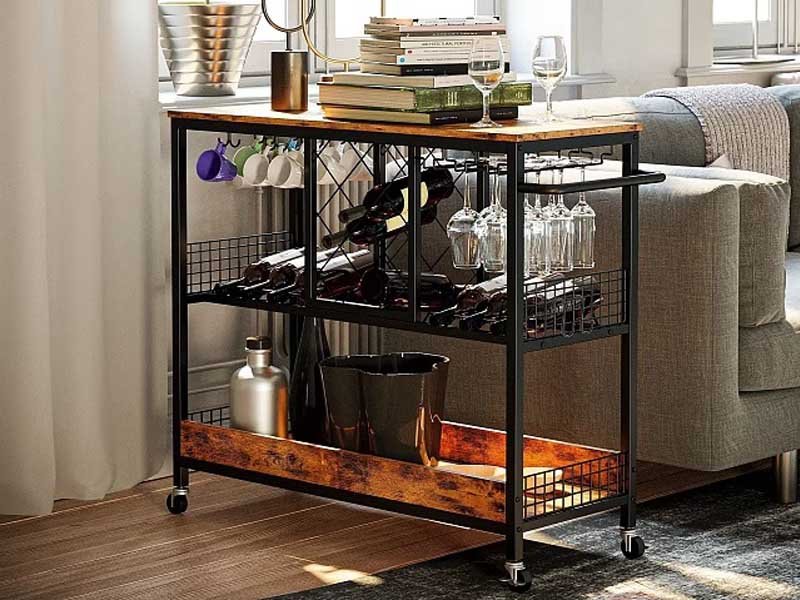Sometimes budget limitations and the desire for a flawless finish clash, making solid wood unfeasible. In such cases, MDF emerges as a perfect alternative, aligning cost-efficiency with quality.
Choosing MDF over solid wood makes sense across scenarios like budget-conscious projects, intricate design applications, and environmentally responsible sourcing. Its consistent pricing, superior surface finish, and dimensional stability offer clear advantages over solid wood, ensuring performance without compromising quality when aesthetics aren't a priority.
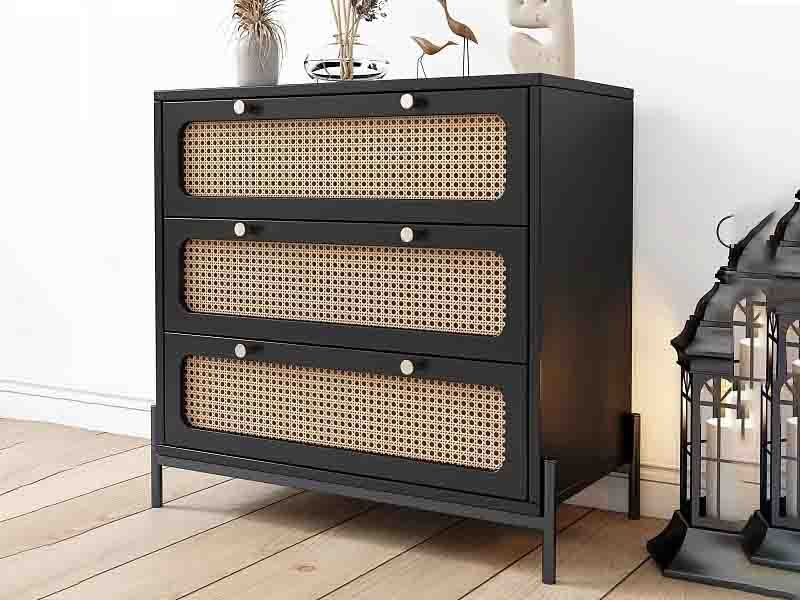
For many projects, MDF isn't just a cost-effective compromise; it’s a strategic choice. Whether ironing out budget constraints, achieving a sleek painted finish, or ensuring reliable sourcing, MDF’s versatility delivers solutions for diverse demands. Recognizing these decision points helps maximize both function and investment.
1. Why Is MDF the Top Choice for Uniform, Budget-Friendly Projects?
Cost limits and visual demands can cause stress. Inconsistent materials waste time and money. Choosing MDF solves the problem with reliable performance, helping projects stay affordable and flawless.
MDF is the best fit for projects needing both low cost and a perfect finish. It offers even pricing and a surface free from knots, unlike solid wood, making it ideal for large-scale, cost-sensitive work.
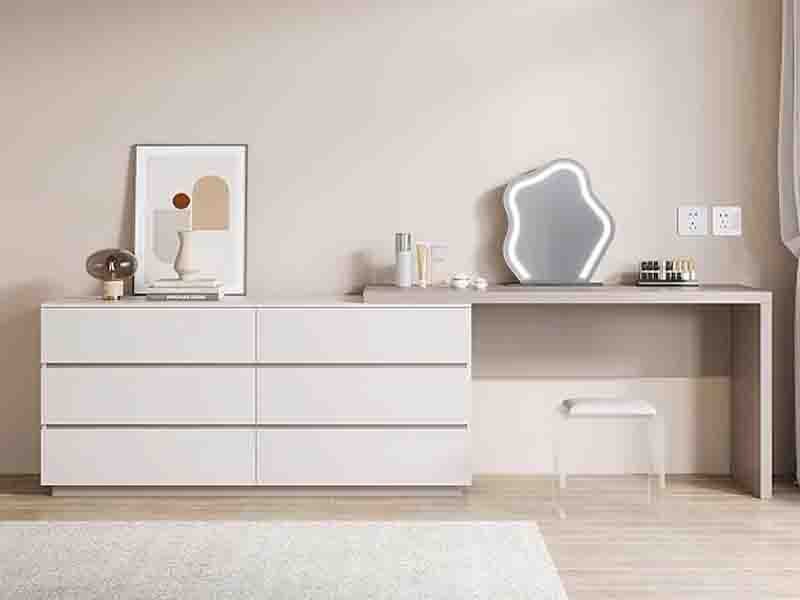
Understanding MDF’s Role in Affordable, Consistent Projects
What Sets MDF Apart from Solid Wood Choices?
When planning multiple units, cabinetry, or commercial work where every piece must look the same, material qualities shape the outcome. Solid wood, though valued for its grain and strength, brings unpredictability. Its cost varies between species and grades. Natural wood shows knots, color changes, and grain patterns. This can look beautiful in statement furniture but will disrupt a run of kitchen cabinets or reception desks.
MDF, or Medium Density Fiberboard, is engineered for complete uniformity. Manufacturers make it from fine wood fibers bonded under pressure. This creates a homogeneous panel with no visible grain, no voids, and no natural knots. As a result, every board looks and behaves the same. Costs do not jump between batches, and finishing is predictable—especially for paint.
Comparing Project Outcomes and Costs
Here is how MDF and solid wood1 stack up for high-volume, budget-driven projects:
| Factor | MDF | Solid Wood |
|---|---|---|
| Surface Uniformity | Flawless, knot-free | Varies: knots, grain, color |
| Price Consistency | Always stable | Changes by species & grade |
| Paint Finish | Smooth, covers perfectly | Shows grain, risks bleed |
| Delivery Lead Times | Short, easy to source | Longer with unpredictable stock |
| Edge Detailing | Clean cuts, no splintering | May splinter, harder to shape |
I saw a project in a new apartment complex with over a hundred kitchen setups. Designers needed flawless cabinet doors, all the same cream color, at the lowest price. MDF enabled the build. No board needed special sorting or extra priming. This cut labor time and paint costs.
Solid wood would have brought out wood grain and color mismatch after painting. To match every panel, costs would have jumped—even before adding the price of puttying knots or dealing with waste from rejects.
Application Niches Where MDF Excels
If the job calls for paint instead of a wood-stain finish, MDF’s edge becomes clearer. Most commercial shelving in shops, medical offices, schools, and budget hotels comes from MDF. It meets tight budgets. It holds screw-fixings and hardware well for lightweight to mid-range uses. No need to pay for wood’s grain if grain will be hidden.
In my experience, MDF shines for closet systems in multi-dwelling units. Every owner gets an identical layout and appearance—no irregularities. Installers work faster, knowing the material will not split or behave unexpectedly.
Addressing MDF’s Limits
MDF's core weaknesses are moisture swelling and low impact resistance compared to high-density hardwoods. In dry, indoor environments, these issues rarely matter, but for bathroom cabinetry or heavy-duty shop counters, I select moisture-resistant grades2 or consider alternatives.
Wrapping Up
Choosing materials for cost-sensitive, uniform projects3 needs clear targets. MDF delivers a clean start and a tidy finish without the price swings or visual flaws of natural wood. For many budget-focused applications, it provides a smart answer.
MDF is engineered for complete uniformity with no visible grain or knots.True
MDF panels are made from fine wood fibers bonded under pressure, resulting in a homogeneous panel that ensures consistent appearance.
Solid wood is always cheaper than MDF for uniform projects.False
Solid wood prices can vary significantly based on species and grade, often making MDF the more budget-friendly option for uniform projects.
2. Why Does MDF Deliver Better Painted Surfaces Than Wood?
Many struggle with uneven painted finishes4 caused by wood grain. Frustration grows as prep becomes endless. There is a proven solution for perfect surfaces.
MDF offers ultra-smooth, paint-ready surfaces with no visible grain. It prevents telegraphing, cuts prep time, and gives flawless matte or high-gloss finishes more easily than solid wood.
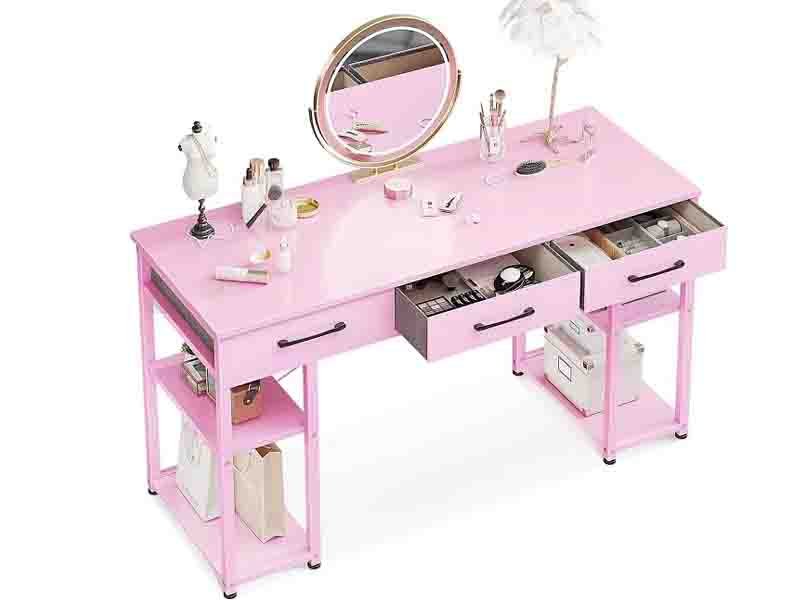
MDF Versus Solid Wood: The Painted Finish Showdown
Understanding the Grain Challenge
When I first started refinishing cabinetry, I faced a real problem. Solid wood, no matter how much sanding or filling I did, always pushed its grain through the finish. The end result often looked streaky or inconsistent. I realized this is called “telegraphing5.” Wood has natural fibers and grain lines that soak finish unevenly. These lines telegraph visually and to the touch. For projects demanding a sleek look, such as high-gloss kitchen cabinets or modern wall panels, the result is often disappointing and time-consuming.
Medium-density fiberboard, or MDF, is a totally different story. Its surface is machine-smooth. There are no grain lines, fibers, or knots. Paint, lacquer, and even the thinnest veneer cling smoothly and evenly.
MDF's Ultrafine Surface: What That Means for You
MDF is engineered from wood fibers glued together under pressure. This creates a flat, dense panel. Because there is no grain direction or lumps, preparation is minimal. I often need only one quick sanding pass. Then, the primer and paint lay down perfectly. Here’s how MDF compares to solid wood:
| MDF | Solid Wood | |
|---|---|---|
| Raised grain after painting | Minimal | Significant |
| Need for fillers and sealing | Low | High |
| Consistency across large panels | Excellent | Poor (visible seams) |
| Finish available (matte/gloss) | Easy | May require extra prep |
| Veneer/laminate adhesion | Superior (no grain) | Moderate (grainy) |
Painted or Laminated? Why Finish Quality Matters
Let me describe two scenarios. In the first, I painted solid wood bookshelves. After three coats of finish and hours of prep, a faint wave of grain was still visible. In the second, I painted MDF panels for a client’s modern kitchen. One primer and two finish coats delivered a showroom-smooth surface. The client was amazed by the result.
This is not just about looks. A smooth substrate gives paint, lacquer, or laminate a stronger grip. That means longer-lasting finishes and less risk of peeling or bubbling. MDF is the material of choice for designers who want seamless, bright, or ultra-matte looks.
The Bottom Line: Is MDF Right for Your Project?
If your priority is an even, flawless painted surface, MDF is often the best answer. It saves prep time. It needs less sanding and filling. It holds paint, lacquer, veneers, and laminates consistently. MDF is used for high-end cabinetry, display panels, and furniture where finish perfection is non-negotiable. Solid wood offers beauty for some styles, especially when you want its natural character. But if you are chasing a smooth, modern result, MDF leads every time.
MDF offers ultra-smooth surfaces that prevent telegraphing in painted finishes.True
MDF's smooth surface eliminates wood grain visibility, resulting in even paint application and no telegraphing effect.
Solid wood provides a more consistent painted finish than MDF.False
Solid wood typically has natural fibers and grain that can push through the finish, leading to an inconsistent surface compared to MDF's smoothness.
3. Why Is MDF the Top Choice for Intricate Furniture Details?
Chipped edges and uneven surfaces ruin detailed designs. This leads to waste and frustration. MDF solves these problems with its uniform structure and smooth cutting results.
MDF’s dense, even make-up prevents chipping and splitting, so every intricate detail—routed profiles, moldings, or CNC carvings—retains sharp, clean lines that other materials struggle to match.
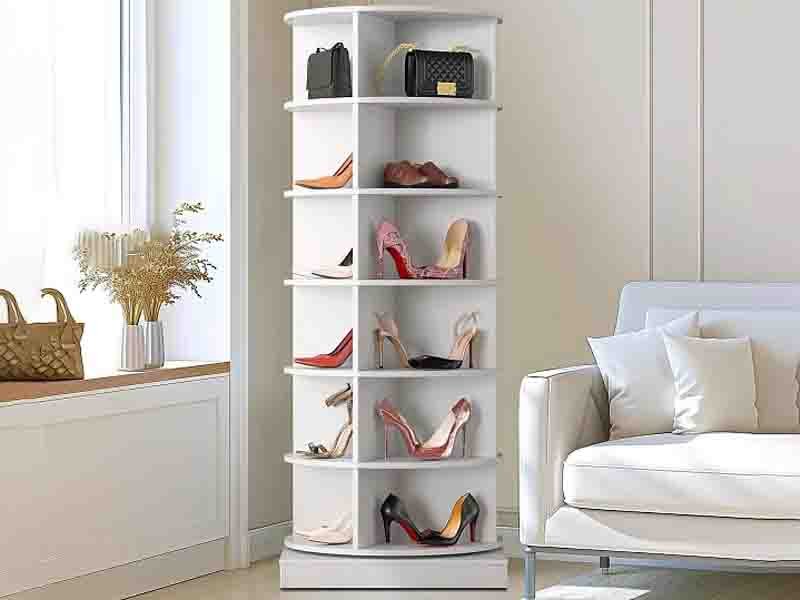
The Problem with Solid Wood for Detailing
Genuine wood looks beautiful, but working it into complex shapes brings headaches. I remember struggling with expensive hardwood for an intricate cabinet door. My router bit caught the grain, tearing deep gouges. Even at slow speeds, knots and variable grain patterns caused chips and splits. Minor mistakes became costly. Friends who tried long, scalloped moldings confirmed the same: solid wood detail work6 demands skill, patience, and plenty of filler.
In contrast, Medium Density Fiberboard (MDF)7 feels predictable. It has no grain, so the router glides smoothly8. Even when carving fine linework for a custom sign, MDF edges stay crisp and chip-free. When I switched to MDF for a batch of routed cabinet fronts, I finished more pieces with less sanding, no fillers, and much less waste.
The reason lies in the materials’ construction:
| Feature | Solid Wood | MDF |
|---|---|---|
| Grain Direction | Varies | Not present |
| Chances of Chip | High—at grain ends | Very low |
| Surface Uniform | Knotty, variable | Consistent, smooth |
| Machining Ease | Demands skill | Beginner-friendly |
| Edge Cleanliness | Often needs work | Consistently sharp |
Examples of Where MDF Excels
Ornate Cabinet Doors: The bevels and curves of an intricate door front need consistent, repeatable cuts. MDF makes this work easier. Unlike solid wood faces, the profiles remain clean along the whole length, with no cross-grain tear-out.
Decorative Wall Paneling and Trim9: To make layered wall panels or complex crown moldings, many builders now favor MDF. I once used MDF for a wainscot project. Sanding was minimal, and paint coverage perfect.
CNC-Routed Signage and Inlays10: Precision CNC routers can carve delicate designs. MDF takes the detail, holds tight corners, and produces minimal dust. Complex logos, script text, and layered geometries translate from a digital design to a panel with almost no loss in detail.
What This Means in Practice
Choosing MDF for detailed work saves time. It reduces labor, waste, and finishing costs. You avoid filling, re-cutting, or hiding defects. When painted, the smooth surface gives a flawless look. This has practical value for large runs of custom panels, architectural moldings, or one-off artistic pieces. For hobbyists, it is forgiving. For businesses, it’s efficient.
Not every job fits MDF—areas needing high structural strength or authentic wood look may require alternatives. But when detail and consistency matter, MDF’s role stands out. I have learned that starting with the right material shapes the entire outcome, especially when every line and edge must be sharp, seamless, and free of flaws.
MDF provides a consistent and smooth surface that prevents chipping and splitting during intricate detailing.True
MDF's dense and even makeup ensures sharp, clean lines and reduces the risk of damage while machining.
Solid wood is the best choice for achieving intricate details with no risk of chips or splits.False
Solid wood is prone to chipping and splitting due to its variable grain and knots, making it less reliable for intricate detailing compared to MDF.
4. Why Is MDF the Top Choice for Indoor Furniture Stability?
Moisture makes wood unpredictable. Furniture must last with daily use. The solution is choosing the right core material for indoor conditions.
MDF outperforms solid wood indoors because it resists warping, shrinking, and joint failures in stable environments. Its uniform structure makes it ideal for furniture with tight tolerances and reliable durability.
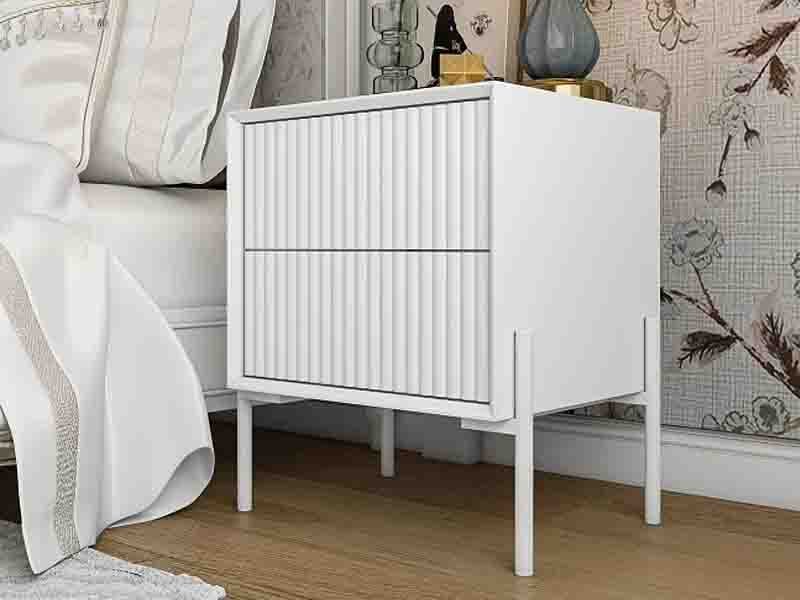
Understanding Dimensional Stability11: Why It Matters
Owners expect furniture to look and function well. Any change in shape, size, or fit brings frustration. I once assembled a bookcase and watched the back panel crack as humidity shifted through seasons. That experience showed me how critical material choice is for stability.
Solid wood is a living material even after harvest. Air inside a room always has some moisture. Solid wood absorbs or loses this moisture, causing it to expand or contract. This movement puts stress on joints, cracks finishes, and warps panels. For everyday users, this means doors may not close, joints become loose, or drawer faces misalign.
Medium-density fiberboard (MDF) uses small wood fibers pressed and bonded with resins under heat. Every part of a panel reacts the same to its surroundings. MDF hardly reacts to humidity in a climate-controlled room. There is no obvious swelling, shrinking, or other movement.
Comparing MDF and Solid Wood: Real Differences
| Attribute | MDF (Indoors) | Solid Wood (Indoors) |
|---|---|---|
| Dimensional Change | Minimal | Moderate to High |
| Joint Separation | Rare | Common in changing humidity |
| Warping Risk | Very Low | Medium to High |
| Surface Uniformity | High | Variable (grain, knots, etc.) |
| Best for Tight Tolerances | Yes | Risk of misalignment |
Where and Why MDF Excels
MDF excels in workspaces, built-ins, and display areas. For example, offices with shelving need shelves that stay true over time. Wardrobes and bookcases in homes should not shift out of square. MDF makes it possible to design precise, modern cabinetry since edges and joints hold their place under indoor conditions.
Display cabinets offer another test. I once helped a client install glass-inset MDF cabinetry in a gallery with controlled temperature and humidity. The tight seams lasted years without gaps, while the few solid wood fixtures started to show separation around moldings.
The Limits and Choices
No material works everywhere. People sometimes use MDF outdoors, but it quickly fails there. Indoors, though, where heating and cooling keep the air steady, MDF is well-suited. Builders choose it when reliability and precision matter. I have seen MDF resist the urge to move when other materials let owners down.
Final Take
For indoor furniture projects12 needing tight fits and a long life, MDF gives the best performance and stability. Its engineered structure13 grants peace of mind where solid wood's natural beauty loses out to shifting and shrinking. The choice depends on use, but for stable environments, MDF stands out as the smarter pick.
MDF offers superior stability for indoor furniture compared to solid wood.True
MDF is engineered to resist warping and shrinking, providing consistent stability in controlled indoor environments.
Solid wood is less prone to warping than MDF in indoor conditions.False
Solid wood is more susceptible to dimensional changes and warping due to moisture fluctuations, making MDF the better choice for stability.
5. How Does MDF Save Costs in Hidden Furniture Parts?
Hidden structural components in furniture often raise costs and waste resources. Overbuilding with expensive materials where no one will see them causes frustration. MDF fixes this without losing quality.
MDF saves costs in hidden furniture parts by delivering required strength at a lower price, allowing fast machining and assembly. It replaces solid wood where looks do not matter, so production becomes efficient and economical.
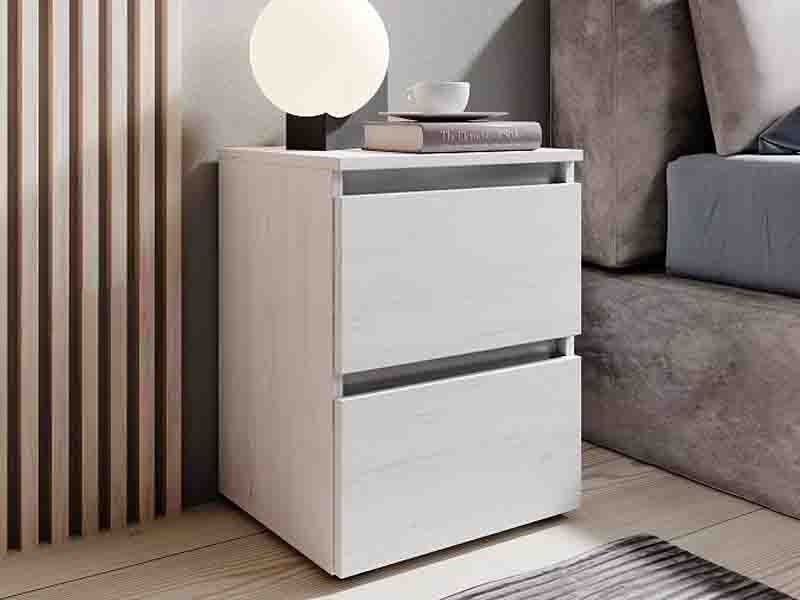
Why Choose MDF for Concealed Components?
Many people only look at the outside of furniture. Few realize how much material hides in drawer bottoms, cabinet backs, or internal frames. When I started making custom shelving, I wasted money on solid wood for every part—even those nobody saw. My costs ran high and assembly took forever. It did not help the look or strength. Once I switched to MDF for these hidden sections, I noticed quick wins in cost and work speed.
MDF (medium-density fiberboard) blends wood fibers with resin. It is not as beautiful as hardwood, but strong enough for internal supports. When picking material for primary structural areas or visible faces, hardwood still wins. When building the unseen framework, MDF keeps things simple and cheap.
Mechanical Strength and Usability
Every non-visible part needs basic support—not overkill strength. MDF handles stress well unless exposed to moisture or extreme weight loads. For drawer bottoms, hidden frames, and cabinet backs, MDF meets these needs as shown here:
| Component Type | MDF Suitability | Notes |
|---|---|---|
| Drawer Bottoms | High | Sufficient for normal drawer contents |
| Cabinet Backs | High | Supports shelves, keeps form stable |
| Frameworks (Hidden) | High | Works well for frames not under heavy load |
| Visible Surfaces | Low | Not ideal for beauty or detail |
Right away, costs drop because MDF is usually much cheaper than hardwood or plywood. Making cuts and shaping pieces is fast with MDF too. It does not splinter like real wood, so machines run smoother and dull slower. This speed means more units per day and fewer headaches from unpredictable boards.
Efficiency in Manufacturing14
Speed builds profit, but only if strength stays reliable. I learned that MDF assembly time falls short of hardwood in flexibility, but it is far better when it comes to drilling, gluing, and nailing non-visible parts. Consistent density means every batch behaves the same. Joints and fasteners stay secure as long as moisture exposure is controlled.
Choosing MDF for secondary components15 does not mean lowering standards. It means using every material for what it does best. Hardwood stands out for fronts, doors, and tops—anything touched or seen. MDF takes care of the hidden muscle in the project, all at less cost.
When Not to Use MDF
There are times when MDF is not the right fit: If a hidden panel faces damp conditions, or if the piece might carry heavy, shifting loads, plywood or solid wood still works better. For normal household furniture, though, MDF's value keeps budgets and build schedules on track.
Making the switch saved time, money, and nerves in my shop. Now the visible sections shine, with hidden strength packed where practicality matters most.
MDF is a cost-effective material for hidden furniture components.True
MDF provides the necessary strength for non-visible parts at a lower price compared to solid wood materials.
MDF is the best choice for visible surfaces in furniture.False
MDF is not ideal for visible surfaces, as it lacks the aesthetic appeal and detail of hardwood, which is better suited for these areas.
6. Why Do Large Flat Panels Warp Less With MDF?
Struggling with warped panels ruining your projects? Warping and cupping in big wooden panels create costly headaches. MDF offers a stable, flat solution for perfect results every time.
Engineered MDF almost never warps in large, flat panel applications. Its uniform structure resists internal stresses and moisture shifts, making it ideal for doors, table tops, and cabinetry where flatness is critical.

What Causes Solid Wood Panels to Warp?
I often remember frustration when building large wooden surfaces. No matter how carefully I selected lumber, flat panels sometimes warped, cupped, or twisted over time. Wood is a living material. Each piece has unique grain and moisture16 content. Over weeks or months, changes in humidity or temperature cause different sections to expand and contract differently. This movement introduces internal stresses that pull the panel out of flatness.
Moisture is the main cause. For example, if one side of a large conference table absorbs more moisture from the air, it swells and creates a noticeable curve. Even careful joining and seasoning of wood can’t fully prevent these shifts in solid panels.
Why MDF’s Structure Makes It Perform Better
MDF, or medium-density fiberboard, is engineered with wood fibers fused under heat and pressure in a consistent, dense matrix. This composition means each part of the board behaves the same. There are no growth rings, knots, or grain direction to fight against. Moisture is absorbed evenly throughout the panel. As a result, MDF rarely warps, cups, or bows over time.
Here is a direct comparison:
| Property | Solid Wood | MDF |
|---|---|---|
| Grain Direction | Yes | No |
| Internal Stresses | High | Low |
| Moisture Responsiveness | Uneven | Uniform |
| Warping/Cupping Risk | High | Minimal |
I have used MDF for closet sliding doors over two meters long and noticed these doors stay flat for years, even with seasonal changes. Large wall panels made from MDF also hang perfectly straight without unsightly warping at the seams. This reliability saves significant time and avoids customer complaints.
Applications That Demand Flawless Flatness
Big, flat panels are essential for several projects. These include:
- Closet doors
- Wall paneling
- Table tops for meeting rooms
- Cabinet sides and ends
In all these cases, panels must remain uniformly flat. Any warping makes adjusting doors harder, ruins visual continuity, or creates gaps in cabinetry. Solid wood might look great at first, but the risk of problems grows with panel size. MDF, on the other hand, delivers long-term stability. I recommend it every time a job calls for large, flat surfaces.
The Bottom Line on Choosing MDF
Solid wood provides natural beauty but comes with physical limitations. Large, flat solid panels are naturally prone to deformation over time. I have seen many well-built installations fail because of this. By choosing MDF’s engineered consistency, you avoid these risks. The end result: doors that slide smoothly, tabletops that never bow, and cabinetry that keeps its shape. MDF gives peace of mind and ensures your projects meet the highest standards for flatness and durability.
MDF is engineered to resist warping and provide a stable flat surface for large panel applications.True
MDF's uniform structure and consistent density make it highly resistant to warping, making it ideal for applications that require flatness.
Solid wood panels stay flat over time without any risk of warping.False
Solid wood panels are prone to warping due to moisture changes and internal stresses, which can lead to deformation over time.
Conclusion
MDF is a versatile, cost-effective alternative to solid wood17, particularly for projects requiring uniform appearance, intricate machining18, and environmental sustainability19.
-
Understanding the differences between solid wood and MDF can help you make informed choices for your projects. ↩
-
Learn about moisture-resistant MDF grades to ensure durability in high-moisture areas like bathrooms. ↩
-
Discover strategies for selecting materials that balance cost and quality for uniform construction projects. ↩
-
Understanding the causes of uneven painted finishes can help you achieve a flawless look in your projects. Explore this link for expert insights. ↩
-
Learn about telegraphing and how it affects your woodworking projects, ensuring you avoid common pitfalls in finishing techniques. ↩
-
Learn about the common challenges faced when working with solid wood, which can help you make informed choices in your projects. ↩
-
Explore the benefits of MDF in woodworking to understand why it's a preferred choice for detailed designs and smooth finishes. ↩
-
Discover the mechanics behind router performance on different materials, enhancing your woodworking skills and efficiency. ↩
-
Discover the best materials for wall paneling and trim, including why MDF is favored for its smooth finish and ease of use. ↩
-
Learn how CNC routing enhances the precision of signage and inlays using MDF, making it ideal for intricate designs. ↩
-
Understanding Dimensional Stability is crucial for selecting durable furniture that withstands humidity changes, ensuring longevity and functionality. ↩
-
Learn how MDF excels in indoor furniture projects, ensuring tight fits and longevity, making it a top choice for designers. ↩
-
Discover the importance of MDF's engineered structure and how it contributes to its performance and stability in various applications. ↩
-
Learn how efficiency in manufacturing can significantly reduce production costs and improve overall profitability. ↩
-
Discover why MDF is a smart choice for secondary components, balancing cost and performance in furniture design. ↩
-
Understand the impact of moisture on wood and MDF, crucial for ensuring the longevity and quality of your woodworking projects. ↩
-
Discover how MDF can save you money while providing a high-quality finish for your projects. ↩
-
Explore the precision and versatility of MDF for detailed woodworking projects and designs. ↩
-
Learn about the eco-friendly aspects of MDF and its role in sustainable woodworking practices. ↩
